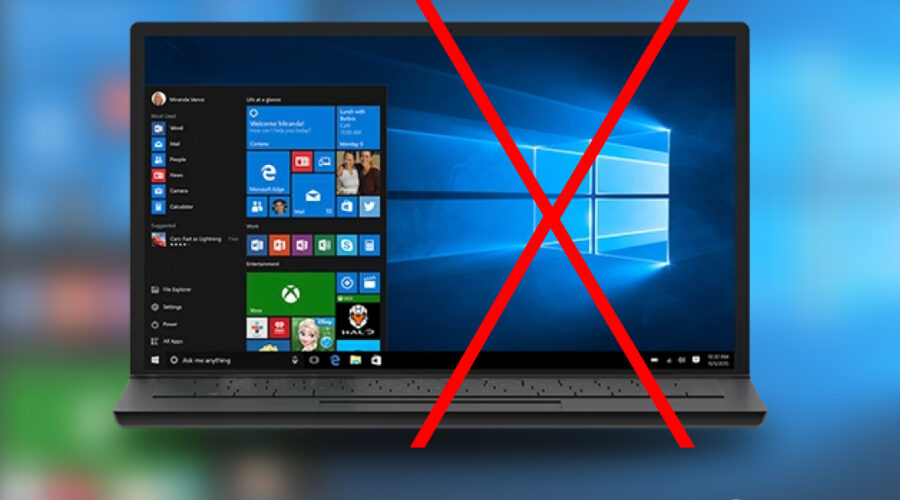
Microsoft to End Windows 10 Support This October 2025: What It Means and What You Should Do Now
For almost ten years, Windows 10 has been the dependable, recognizable face of computing for hundreds of millions of users worldwide.
As of October 14, 2025, Microsoft will no longer provide free security updates, technical support, or feature updates for Windows 10. The final version of Windows 10 will be 22H2.
This is not a minor update notification; rather, it is a crucial deadline that will have serious repercussions for anyone who continues to use the operating system after that date. This has raised consumer groups’ concerns and made many users fearful that they will need to purchase new computers in order to protect themselves from cyberattacks.
This article will give a thorough explanation of everything you should know and most importantly WHAT YOU NEED TO DO RIGHT NOW!
WHAT IS MEANT BY “END OF SUPPORT”?
The phrase “end of support” or “end of life” is frequently underestimated. This does not imply that on October 15, 2025, your Windows 10 computer will stop functioning. Your current apps will probably continue to function normally after it boots up. But it means Microsoft’s public backing, which consists of two essential components, will stop:
- The most important – component is security updates:
Patches for recently found security flaws will no longer be released by Microsoft. This means the vulnerability of your computer to malware, viruses, and cyberattacks could increase. It’s like leaving your front door unlocked in a crowded neighborhood when you use an unsupported operating system online.
- Technical Support: Microsoft will no longer assist with any problems that may come up. This covers options for assisted support as well as free technical support.
Your computer becomes a liability without these security updates, not only for you but also possibly for any network it is connected to. On october 14, 2025 All Windows 10 editions – Home, Pro, Enterprise, and Education – will no longer receive updates after this date.
In contrast to some earlier iterations to windows operating services, Microsoft has not disclosed any intentions to offer customers a paid Extended Security Update (ESU) program. Although organizations (such as businesses) will be able to enrol in an ESU program for a maximum of three years at an additional cost, this is anticipated to be costly and primarily targeted at businesses that require additional time to migrate.
THE BIG ISSUE: HARDWARE REQUIREMENTS
Windows 11 is the logical next step after Windows 10. For many users, though, this is where things get complicated. Compared to earlier Windows versions, Windows 11 introduced much more stricter hardware requirements. The most typical obstacles are:
- TPM 2.0 (Trusted Platform Module): The motherboard needs to have a security chip installed and activated.
- A modern CPU: Processors made around 2018 and newer. Officially, a large number of perfectly functional computers from 2016 – 2017 are not included.
- Secure Boot: A security requirement that needs to be enabled and supported.
How many users are affected by this?
According to the US group PIRG, up to 400 million computers are incompatible with Windows 11, while Consumer Reports estimated that 650 million people worldwide were using Windows 10
The consequences of this? Hundreds of millions of Windows 10 computers currently running are ineligible for an official Windows 11 upgrade.
WHAT CHOICES DO YOU HAVE?
Before the October 2025 deadline, Windows 10 users have a few options to think about.
- If at all possible, upgrade to Windows 11:
This is the simplest choice if your computer is compatible with the hardware specifications stated earlier.
It’s a free upgrade. By selecting Settings > Update & Security > Windows Update and selecting “Check for updates,” you can see if you qualify. Additionally, Microsoft provides a comprehensive compatibility report through the “PC Health Check” app.
- Buy a new computer:
Purchasing a new computer is the safest and most efficient solution for people whose hardware does not support Windows 11. Along with contemporary hardware that provides improved speed, battery life, and security features, new devices will come pre-installed with Windows 11 (or its possible successor).
- Consider alternative operating systems (For more experienced users):
For older machines, this is a feasible but a far more technical option. Linux distributions that can breathe new life into outdated hardware, such as Ubuntu, Linux Mint, or Zorin OS, have become incredibly user-friendly.
Although compatibility with Windows-specific software, particularly games and professional programs like Adobe Creative Suite or particular engineering tools, is the main hurdle.
- Continue to use Windows 10:
You have the option to do nothing. As mentioned, your computer will continue to work.
However, anyone who shops online, banks, or keeps personal information on their device is strongly discouraged from doing this. Every day that goes by after support ends increases the security risk.
CONCLUSION
This end of support’ move for windows 10 by Microsoft has sparked criticizism by many consumer groups. “The lack of backwards compatibility for certain Windows 10 machines sold only a couple of years ago is a blow to consumers’ pocketbooks” according to US watchdog consumer reports, as many are forced to upgrade.
Germany’s Verbraucherzentrale consumer federation cautioned that the decision “worries consumers and limits free purchase choices” while the French organization End Planned Obsolescence (HOP) has petitioned for free updates until 2030.
They went on to say that more people buying new computers damage the environment by producing electronic waste that is difficult to recycle.
Although it is a pressing deadline, the end of Windows 10 support is not shocking. Even though October 14 2025 might seem far off, Amebopreneur advices that now is the perfect time to make plans, particularly for businesses and individuals using outdated hardware.
The main conclusion is straightforward, using Windows 10 after October 14, 2025, will pose a security risk. By weighing your options now, you can make sure that the transition goes smoothly and securely, protecting your digital life for years to come.
The safest course of action is to upgrade to Windows 11 or you can purchase a new device running Windows 11.






